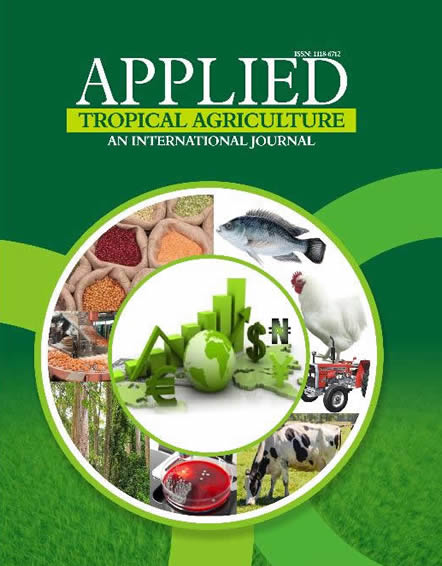Recent awareness of the importance of trees have led to their increasing integration in cities. The biodiversity, socioeconomic
and cultural importance of trees in Akure city, Nigeria was investigated. Akure was stratified into modern (urban)
and ancient (peri-urban); secondary and higher institution sections. The population of Akure is 387,087 inhabitants. A total
of 66 tree species were identified in Akure; with 45 and 21 species occurring in modern and ancient sections, respectively.
Within the modern section, species with high relative dominance were Caryota spp (28.7) and Polyathia longifolia (23.2)
while Carica papaya (14.2) and Mangifera indica (12.9) dominated the ancient section of the city. Secondary schools were
dominated by Gmelina arborea (21.4) and Elaeis guinensis (15.2). The dominant species in higher institutions were
Terminalia catapa (19.2) and Cocos nucifera (18.1). The socio-economic importance of trees, which depended on the social
and educational status of inhabitants, were: ornamental (38%), food/cash crop (36%), timber (11%), shade (9%), life-fence
(3%), medicine (3%), cultural purposes (1%). In higher institutions, ornamental (52%) and shade (17%) were the most
important uses of trees while in secondary schools, edible fruits (35%) and shade (19%) were important. In the ancient
section, food/cash crop was the overwhelming (77%) use of trees while ornamental (90%) was the dominant use in modern
section. Most inhabitants in the ancient section sold some of their tree products for income. Some trees served dual purposes
depending on the social status of their owners. While T. catapa and M. indica were mostly used for food/cash crop by
inhabitants of ancient section, they were used for shade in the modern section. Although medicinal purpose is not currently
among the dominant uses of trees in Akure, there are indications that number of people using tree parts for this purpose is
increasing. While the poor use trees for food and income in Nigerian emerging cities, the rich use them for ornamental
purpose.
Key words: Tree species diversity, urban centres, economic, social, cultural
PAPER TITLE :BIODIVERSITY, SOCIO-ECONOMIC AND CULTURAL IMPORTANCE OF TREES IN EMERGING NIGERIAN URBAN ENTRES: CASE STUDY OF AKURE CITY, NIGERIA
APPLIED TROPICAL AGRICULTURE | VOLUME 22 NUMBER 2 2017
Paper Details
- Author(s) : Onyekwelu, J.C.
- Abstract:


